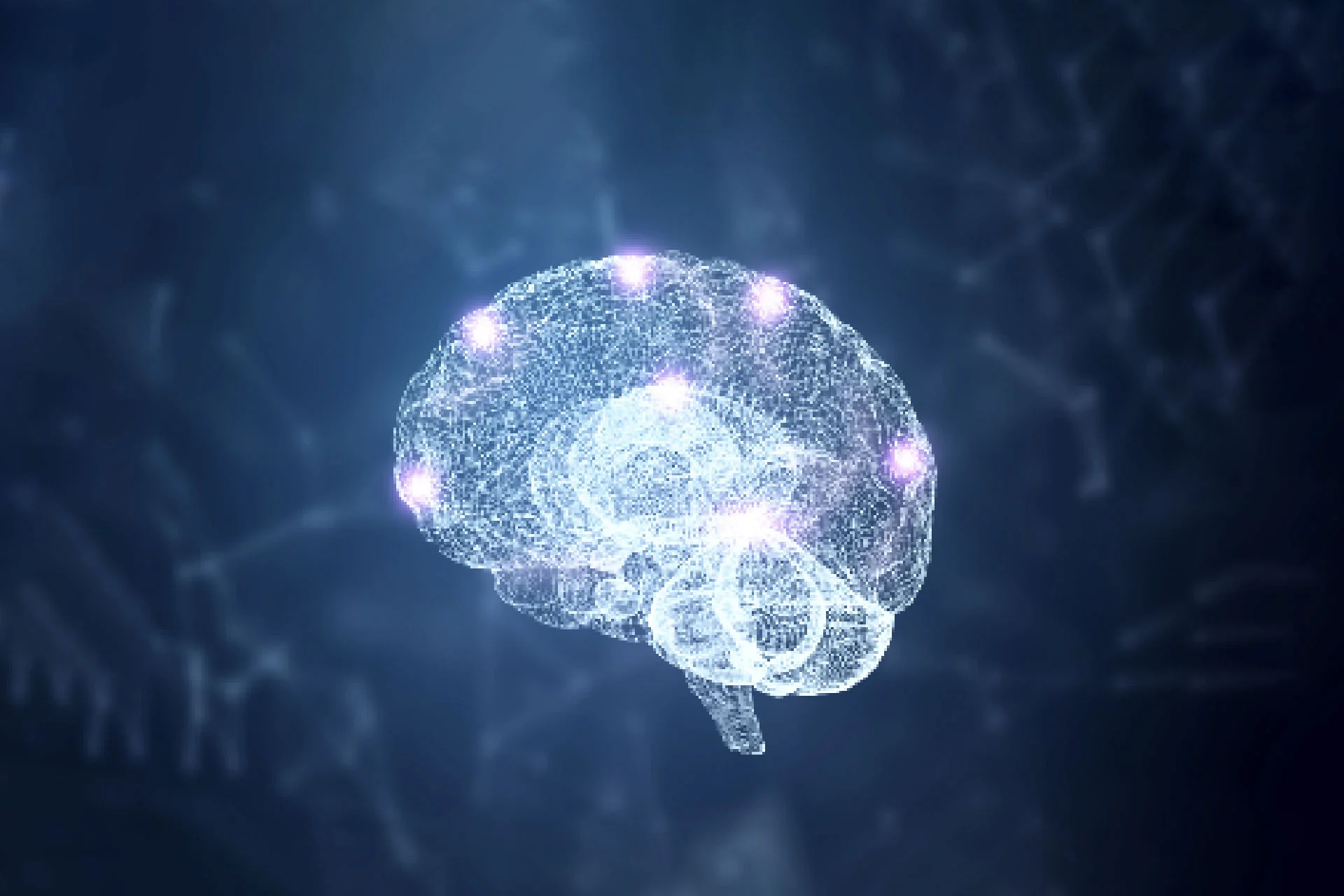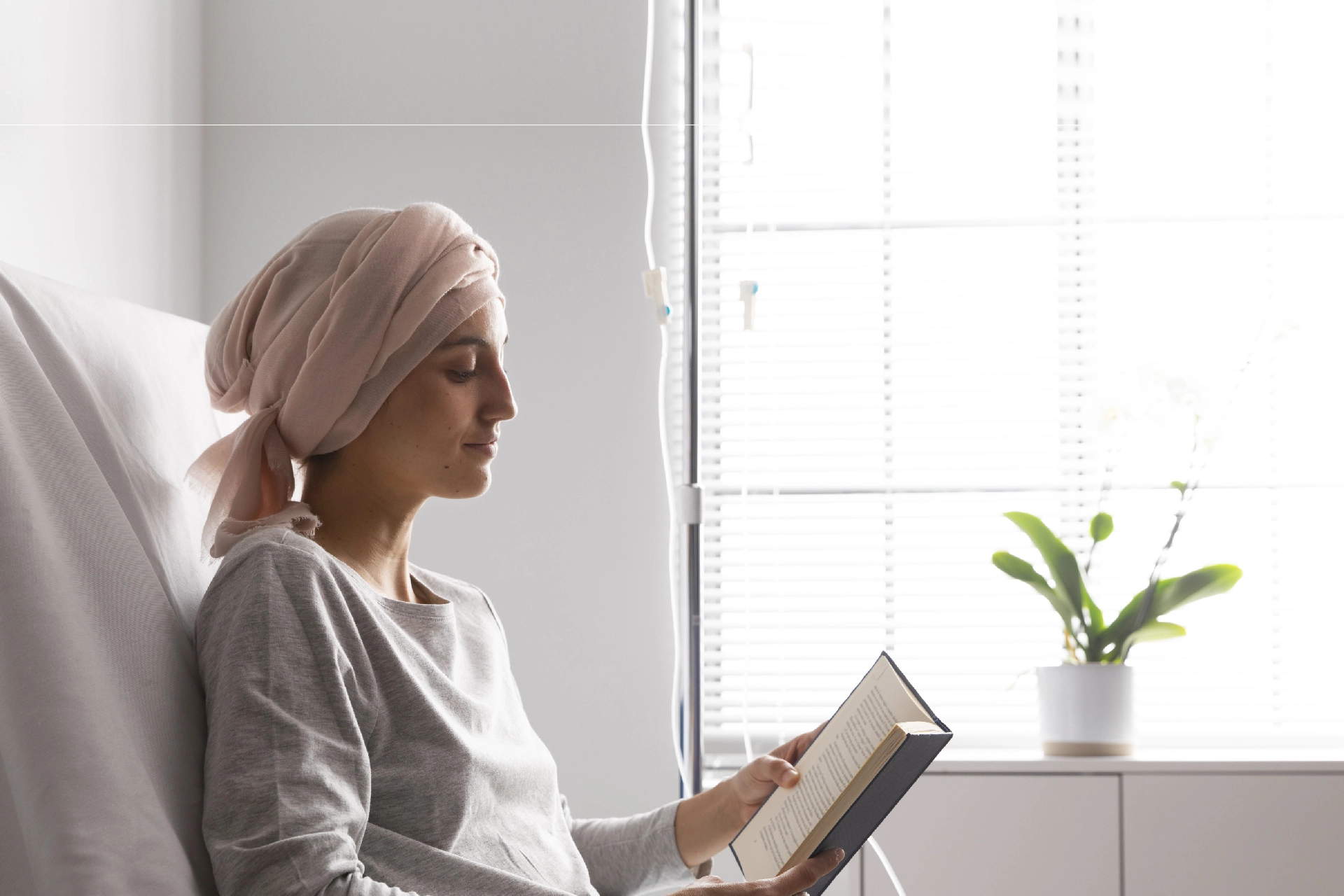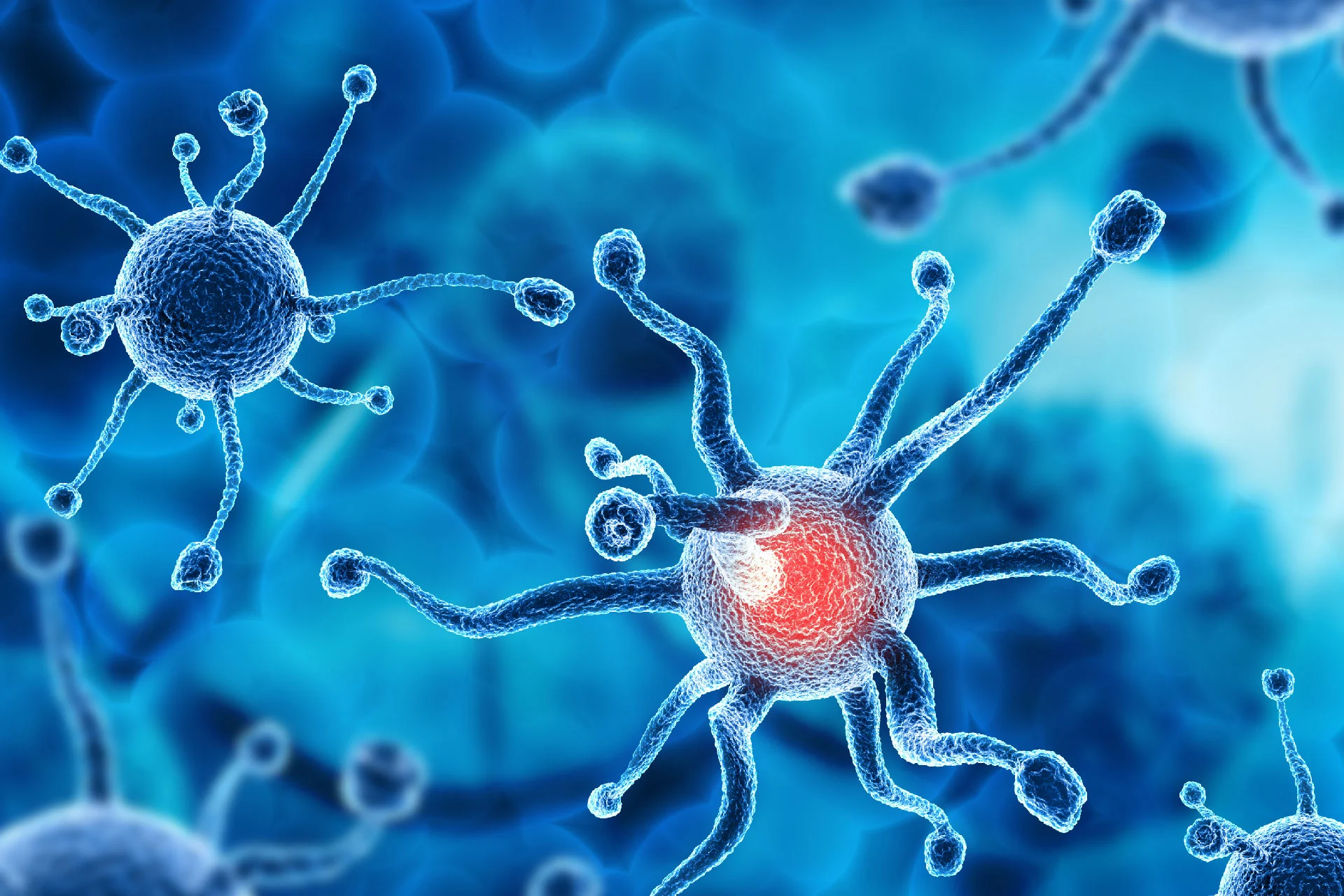Cancer | 9 min read
Endometriosis: Symptoms, Types, Complications, Diagnosis
Medically reviewed by
Table of Content
Key Takeaways
- Excessive bleeding during periods is one of endometriosis symptoms
- Endometriosis complications include infertility and bladder problems
- Age and family history are endometriosis risk factors you should know
Endometrium is a tissue lining the uterus of a woman. Endometriosis is a condition in which a tissue like endometrium starts to grow outside the uterus. During menstrual cycle, this tissue acts like normal uterus tissue, and breaks apart resulting in bleeding. Since there is no outlet for this blood to flow, area surrounding this tissue becomes swollen. This inflammation can cause lesions and scars.
Types of Endometriosis
Based on its location, endometriosis has three endometriosis types
Endometrioma in the ovaries
It is found on the surface of the ovaries, fallopian tubes, and outer lining of the uterus (the peritoneum).
Superficial peritoneal lesion
It occurs when endometrial tissue grows into the connective tissue of the uterus or other pelvic organs. This can cause the organs to fuse together.
Deeply infiltrating endometriosis
Deep infiltrating endometriosis is the least common but can be the most severe. It occurs when endometrial tissue grows into the uterus muscles or other pelvic organs.
Endometriosis is a progressive disease that can cause pain, infertility, and other health problems. There is no cure, but treatment can help manage the symptoms.
This condition affects approximately 10% of women in the reproductive age [1]. It can even cause infertility issues. There is a need for increased awareness of this condition to make early diagnosis and treatment possible. Though it is not threatening like uterine cancer or nasopharyngeal cancer, timely evaluation of this condition is vital. Read on to get a proper insight on endometriosis symptoms, diagnosis and treatment.
Additional Read: How Women Over 30 Can Address Their Health Proactively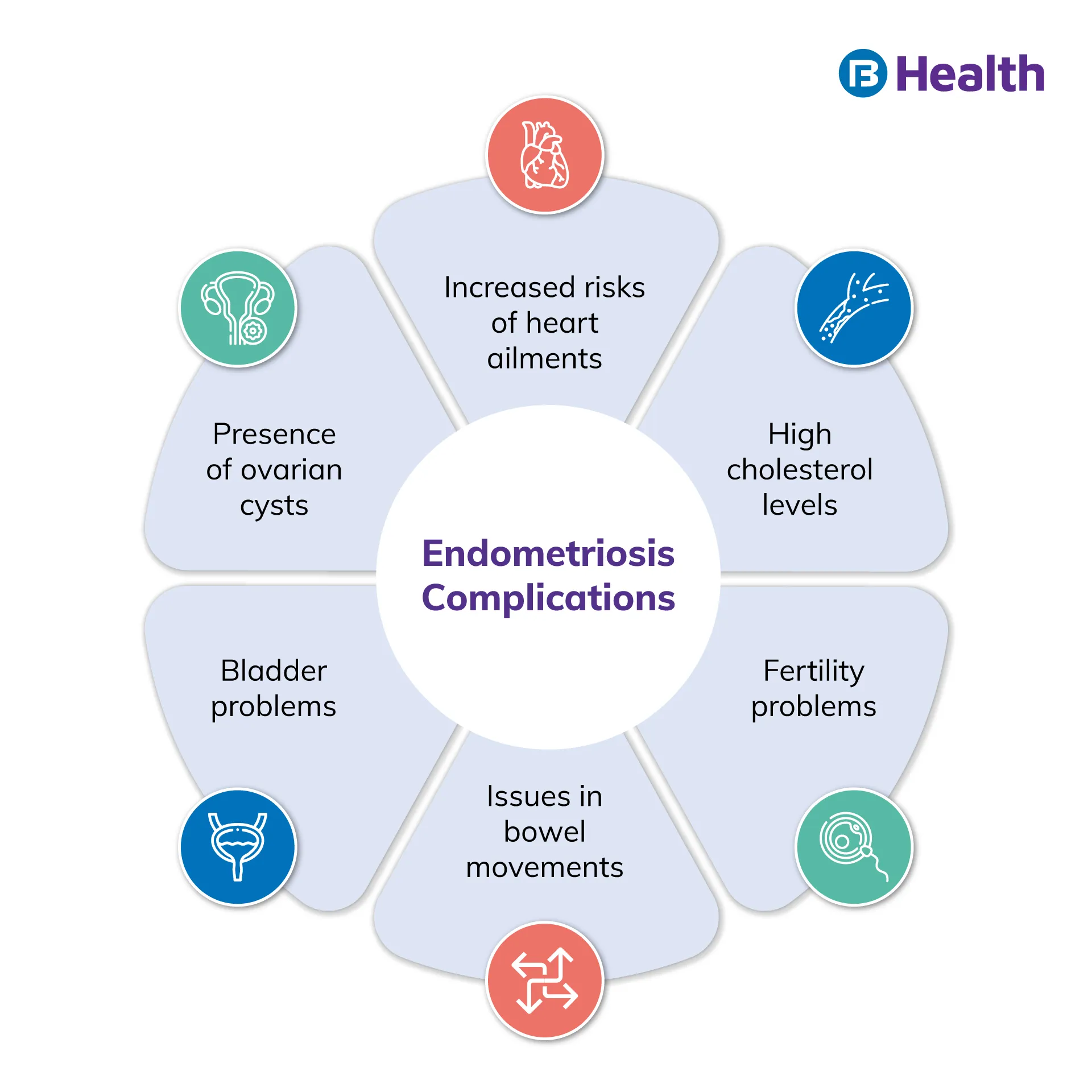
Endometriosis Symptoms
The main symptom of this condition is acute pain in your pelvic regions during menstrual cycle. Though cramps are normal during periods, you may experience severe pain if you have endometriosis. Note that the severity of this condition cannot be measured by the intensity of your pain. Few other common symptoms include:
- Excessive bleeding
- Pain during intercourse
- Stomach bloating
- Pain during urination and bowel movements
- Nausea
- Fatigue
- Diarrhea
- Constipation
- Severe back pain
- Presence of blood in urine or stool
Endometriosis Risk Factors
This condition is common during the reproductive age of women. However, the early symptoms may start showing during puberty [2]. If you have a family member with this condition, you are at a higher risk to acquire it. In case you have not conceived, you may develop it. However, this condition is common in women who has given birth as well. Some more risk factors include:
- Getting cycles at a very young age
- Short duration of the cycle
- Heavy bleeding and longer periods
- Intercourse during menstruation
- Alcohol intak
- Low body weight
- Infertility
Endometriosis Causes
Endometriosis is a condition where tissue that normally lines the inside of your uterus grows outside of it. This can cause pain, heavy periods, and infertility. While the exact cause of endometriosis is unknown, there could be several endometriosis causes that may contribute to its development, including
Family history
If your mother or sister has endometriosis, you're more likely to have it as well.
Hormonal problems
Endometriosis is more common in women with certain hormone conditions, such as polycystic ovarian syndrome (PCOS)
Immune system disorders
Women with autoimmune diseases, such as Thyroiditis, are at increased risk for endometriosis.
History of Pelvic inflammatory disease (PID)
PID is an infection of the reproductive organs that can lead to the development of endometriosis.
If you think you may have endometriosis, it's important to see your doctor for a diagnosis. There is no one-size-fits-all treatment for endometriosis, but several options can help relieve your symptoms and improve your quality of life.The exact reason for this condition remains unknown. However, a number of experts believes that a few endometrium pieces return back to fallopian tubes and reach the pelvic cavity. This cavity is the space inside your pelvis wherein your reproductive organs are held. These tissue pieces may deposit themselves on the surface of your reproductive organs. They break apart during your periods, similar to the endometrium in your uterus. This can cause inflammation of adjacent tissues, which may form cysts and scars.
Endometriosis Diagnosis
After analyzing your symptoms, your doctor may ask you to undergo the following tests for physical examination.
1. Pelvic examination
It is a technique in which your doctor checks for any abnormalities like cysts or scars behind the uterus manually.
2. Ultrasound tests
This technique involves sound waves of high frequency to produce images of your internal organs. An ultrasound device may be placed on your abdomen or in your vagina to get a clear image of your reproductive organs.
3. MRI scan
This method uses both radio waves and magnetic field to form detailed images of different tissues and organs inside your body. Just like radiotherapy for cancer treatment uses radio waves to destroy cancerous cells, this scan helps determine presence of cysts in your reproductive organs.
4. Laparoscopy
To get a detailed view, you may have to undergo this procedure. Your surgeon makes a small incision near navel through which laparoscope is inserted. This helps locate endometrial tissue present outside the uterus.
What are Some Endometriosis Stages?
Endometriosis is a disease that affects women of childbearing age. It occurs when the tissue that lines the inside of the uterus, called the endometrium, grows outside of the uterus. Endometriosis most commonly affects the ovaries, fallopian tubes, and the tissue lining the pelvis.
There are four endometriosis stages, ranging from mild to severe.
Stage I
This is the mildest form of the disease. A few small lesions or clumps of endometrial tissue may be found on the ovaries or other pelvic organs
Stage II
This is a moderate form of the disease. There are more lesions, and they may be larger than in stage I. The lesions may be found on the ovaries, fallopian tubes, or other pelvic organs
Stage III
This is the most severe form of the disease. There are many lesions, and they may be very large. The lesions may be found on the ovaries, fallopian tubes, or other pelvic organs. They may also be found in the abdomen or in the lower back
Stage IV
This is the most severe form of the disease. The lesions are large and may be found anywhere in the body, including the lungs, brain, and other organs
Endometriosis Complications
Endometriosis complications, such as ovarian cysts, can rupture and cause internal bleeding. The condition can also lead to scar tissue formation and adhesions, which can cause pain and infertility. In severe cases, endometriosis can even cause cancer of the uterus. If you suspect that you may have endometriosis, it is important to see a doctor for a diagnosis. No single test can diagnose endometriosis, but your doctor will likely perform a pelvic exam and order ultrasounds or other tests to rule out other conditions. Treatment for endometriosis often includes pain medication, hormone therapy, and surgery.
Additional Read: Radiotherapy for Cancer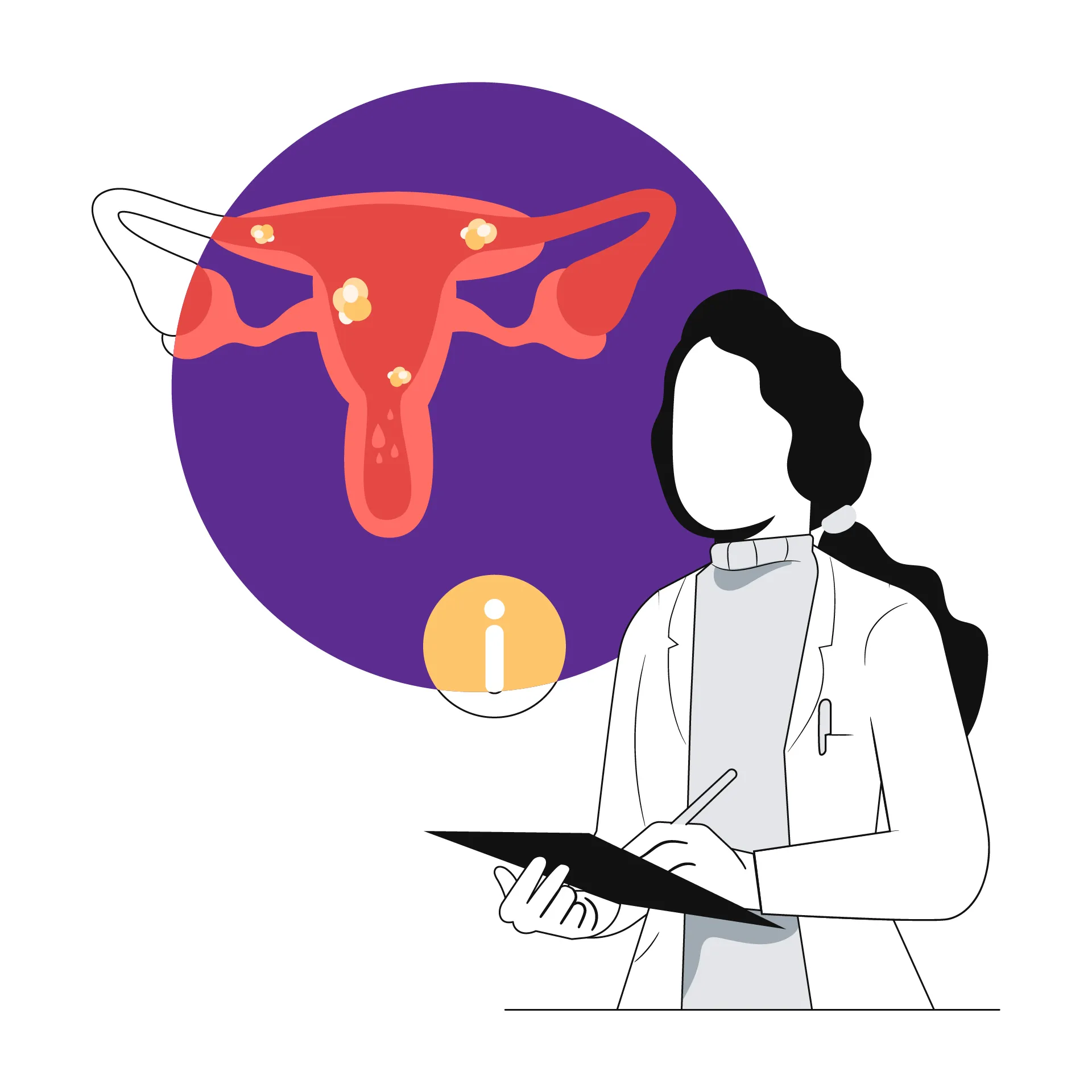
Endometriosis Treatment
Endometriosis is a painful condition that affects the uterine lining. It is caused by tissue from the lining of the uterus growing outside the uterus, usually on other organs in the pelvic region. It can also affect women's fertility and lead to some other complications.
There are different treatments for endometriosis, but most of them do not get rid of it completely. The best treatment option for endometriosis is still not known, which makes it difficult for doctors to diagnose and treat this condition.
Pain medications:
There are many different types of pain medications that can be used to treat endometriosis, including non-steroidal anti-inflammatory drugs (NSAIDs), such as ibuprofen or naproxen; acetaminophen; and opioids, such as codeine or morphine.
Hormone Therapy:
Hormone therapy for endometriosis treatment is recommended for women who want to become pregnant in the future, as it can reduce the chance of miscarriage and premature birth. It also helps to reduce pain and improve quality of life. Hormone therapy involves taking estrogen or progesterone pills that are inserted into your vagina or taken as a tablet every day for up to 12 months.
Hormonal contraceptives:
Hormonal contraceptives are often used to treat endometriosis. Although many possible side effects are associated with hormonal contraceptives, they have often been considered the most effective treatment for endometriosis. In some cases, surgery may be recommended in addition to or as an alternative to hormonal contraceptives.
Gonadotropin-releasing hormone (GnRH) agonists and antagonists:
GnRH agonists work by causing the body to stop making the hormones that stimulate ovulation (the release of an egg from the ovary). GnRH antagonists work by blocking the action of GnRH, which prevents the body from making the hormones that stimulate ovulation.
Danazol:
Danazol is a synthetic hormone that is used to treat endometriosis. It functions by suppressing the production of estrogen, which is thought to be a major contributor to the development of endometriosis. Danazol is typically taken for three to six months and may be effective in reducing pain, inflammation, and the size of endometrial lesions.
Conservative surgery:
Conservative surgery is one treatment option for endometriosis. In conservative surgery, the surgeon removes the endometriosis implants and lesions. This can help to relieve pain and improve fertility. In some cases, conservative surgery may also be used to treat severe pain from endometriosis.
Last-resort surgery (hysterectomy):
While there are various treatments available for endometriosis, sometimes surgery is the only option. A hysterectomy (the removal of the uterus) is typically reserved as a last-resort surgery for endometriosis, as it can have serious side effects and is not always effective. However, for some women, a hysterectomy is the only way to get relief from the pain and suffering caused by endometriosis.
Treatment for this condition is possible either with surgery or medications. You may be asked to take some anti-inflammatory drugs to reduce your swelling and to ease your menstrual pain. In case you are trying to get pregnant, you may be put on hormone therapy along with pain relievers.
Though hormone therapy is not a permanent solution for this condition, it may reduce the growth of endometrial tissues. Since this condition can cause fertility issues, you may have to undergo treatment for the same. In extreme cases, uterus removal may be done for those who do not want to conceive.
It is important to find a doctor with whom you are comfortable for treating endometriosis. Before you start any treatment plan, always get a second opinion. Having an accurate diagnosis does play a crucial role in managing this condition. Connect to renowned gynecologists on Bajaj Finserv Health to address the symptoms. Book teleconsultation and clear your concerns from the comfort of your home. Be proactive and take steps to maintain a good reproductive health.
References
- https://www.who.int/news-room/fact-sheets/detail/endometriosis
- https://www.ncbi.nlm.nih.gov/pmc/articles/PMC3712662/
Disclaimer
Please note that this article is solely meant for informational purposes and Bajaj Finserv Health Limited (“BFHL”) does not shoulder any responsibility of the views/advice/information expressed/given by the writer/reviewer/originator. This article should not be considered as a substitute for any medical advice, diagnosis or treatment. Always consult with your trusted physician/qualified healthcare professional to evaluate your medical condition. The above article has been reviewed by a qualified doctor and BFHL is not responsible for any damages for any information or services provided by any third party.

